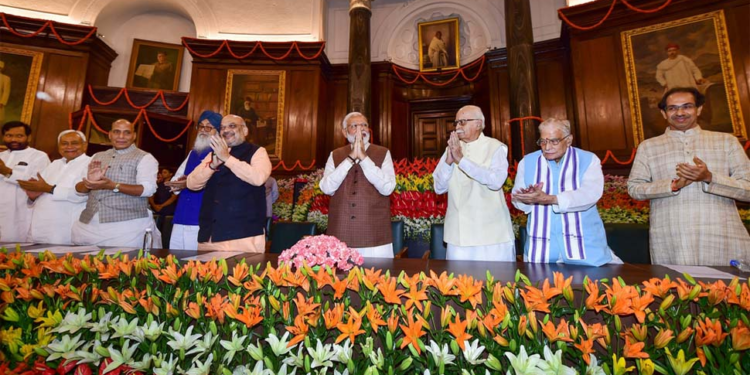With the 2019 Lok Sabha election results, BJP has emerged as the single largest majority party after gaining 303 seats, an increase from their previous 282 seats. The apparent main opposition Congress has just secured 52 seats. NDA led by BJP, through this mandate has secured its position of forming the government at the center, with a full majority in the Lok Sabha. However, the BJP government has a few more hurdles to cross before it can ensure that the bills introduced in the lower house do actually become law. For this, the NDA needs a majority in the Rajya Sabha as well, as the opposition tries to halt each and every bill introduced by the BJP, irrespective of the citizen’s welfare; an example being, the Triple Talaq bill for which the opposition in Rajya Sabha did not even allow a debate.
Currently, the NDA holds 101 seats in Rajya Sabha. This number is impressive no doubt, as last year BJP had overtaken Congress in the upper house for the first time in history; but still isn’t enough to make a substantial difference as the opposition often unites together to oppose the bills introduced by NDA. In order to reach the majority mark, the NDA needs 123 seats out of the 250 seats.
Over and above the 101 members, the NDA enjoys the support of three nominated members, which are, Swapan Dasgupta, Narendra Jadhav, and Mary Kom; along with at least three independent MPs, taking the total tally to 107, yet, falling short of the required 123 members.
In order to reach the majority mark, the BJP needs to elect more members to the Rajya Sabha. Members of the Rajya Sabha are elected in a slightly different manner than the Lok Sabha members. Herein, members of the State Legislative assembly elect leaders for the upper house; so, the majority party in the Legislative assembly elects the state representatives to the Rajya Sabha. Along with that, the President elects 12 members to the upper house based on their expertise and knowledge in various fields.
1/3rd strength of the house retires every 2 years, so between now and November 2020, 75 members will be re-elected. 2 seats from Assam are going to be vacant on June 14th for which elections will be held on June 7th. Both of those seats are being represented by Congress leaders. Since BJP has the power in the state, BJP candidates will be elected in their place. BJP is considering electing LJP leader Ram Vilas Paswan, an NDA ally in Bihar. Three more seats will fall vacant in the state next year.
In November next year, 10 seats represented by UP leaders will fall vacant, out of which 9 are held by non-BJP leaders, most of which NDA will secure as they have 309 members in the UP legislative assembly. As many as 6 seats in July this year will be up for elections, 55 seats next year in April, 5 in June and 1 in July, out of which, NDA is also expected to pick up seats from Bihar, Gujarat, Uttarakhand, Arunachal Pradesh, Mizoram, Karnataka, Assam, Meghalaya and Himachal Pradesh. It also expected to get 2 seats in Rajasthan, 6 seats in Tamil Nadu due to its new ally AIADMK, and perhaps one in Odisha, due to the friendly party BJD.
At the same time, NDA is expected to lose seats in Rajasthan, Bihar, Madhya Pradesh and Chhattisgarh. Although, assembly elections will take place in Maharashtra, Haryana and Jharkhand this year, and an NDA victory in these states can further bolster the parties’ lead in the Upper House of Parliament by November 2020.
As far as statistics show, BJP led NDA will comfortably cross the 125 majority mark by November 2020. This is going to be an extremely welcome move as the opposition has blocked all the crucial bills introduced by the BJP and passed by the Lok Sabha including, the citizenship bill, triple talaq bill and the amendments to the Land Acquisition Act. On one occasion in 2016, the United Opposition had even passed amendments to the President’s speech. Moreover, the NDA government will also require a Rajya Sabha majority to take a call on passing legislation to build the Ram Mandir in Ayodhya and abrogation of article 370, key issues of its manifesto. The united opposition in their efforts to undermine the Modi government had been creating a hindrance in the path to development and citizen welfare in the country and come 2020, their relevance will cease to exist.


































